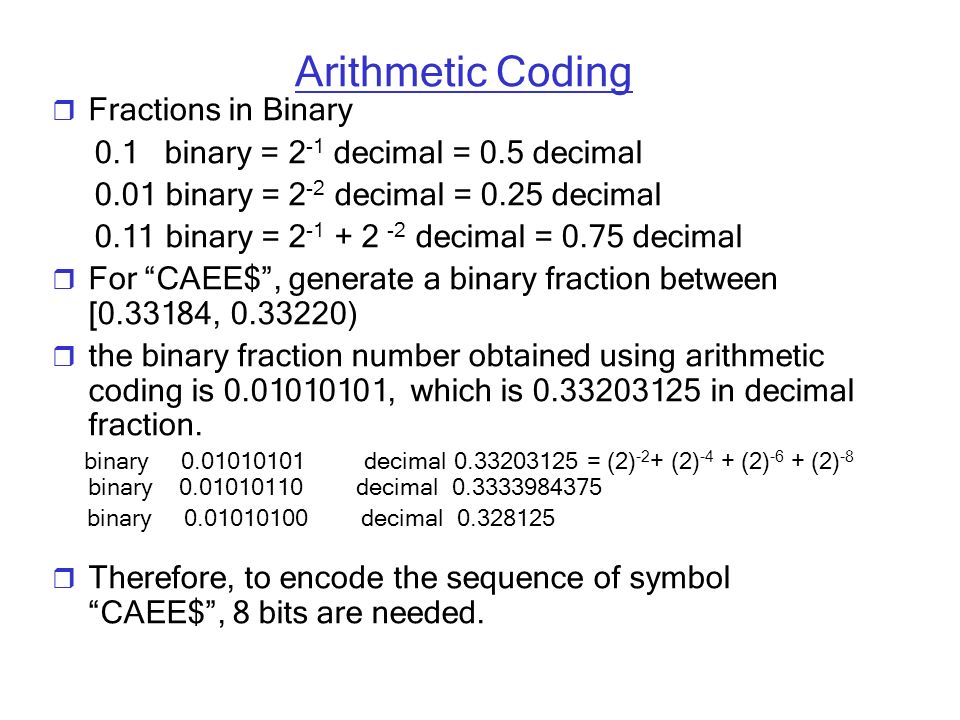C Program For Arithmetic Coding For Data
This article includes a, but its sources remain unclear because it has insufficient. Please help to this article by more precise citations. (September 2016) () Arithmetic coding is a form of used in. Normally, a string of characters such as the words 'hello there' is represented using a fixed number of bits per character, as in the code. When a string is converted to arithmetic encoding, frequently used characters will be stored with fewer bits and not-so-frequently occurring characters will be stored with more bits, resulting in fewer bits used in total. Arithmetic coding differs from other forms of entropy encoding, such as, in that rather than separating the input into component symbols and replacing each with a code, arithmetic coding encodes the entire message into a single number, an fraction q where 0.0 ≤ q. An arithmetic coding example assuming a fixed probability distribution of three Symbols 'A', 'B', and 'C'.

Art And Architecture Of Indus Valley Civilization Pdf. ARITHMETIC CODING FOR DATA COIUPRESSION IAN H. WIllEN, RADFORD M. NEAL, and JOHN G. CLEARY Arithmetic coding is superior in most respects to the better. C++ Generic Programming. The impact this has on your program. Arithmetic encoders are particularly well. Data Compression With Arithmetic Coding. Aft S Tardis. Avs Video Converter Crack Keygen Pes. Arithmetic Compression With C#. In an article entitled 'Arithmetic Coding for Data Compression' in the February 1987. An example program is shown in the.
Probability of 'A' is 50%, probability of 'B' is 33% and probability of 'C' is 17%. Furthermore, we assume that the recursion depth is known in each step.
In step one we code 'B' which is inside the interval [0.5, 0.83): The binary number '0.10 x' is the shortest code that represents an Interval that is entirely inside [0.5, 0.83). ' x' means an arbitrary bit sequence. There are two extreme cases: the smallest x stands for zero which represents the left side of the represented interval. Then the left side of the interval is dec(0.10) = 0.5. At the other extreme, x stands for a finite sequence of ones which has the upper limit dec(0.11) = 0.75 Therefore, '0.10 x' represents the interval [0.5, 0.75) which is inside [0.5, 0.83) Now we can leave out the '0.'